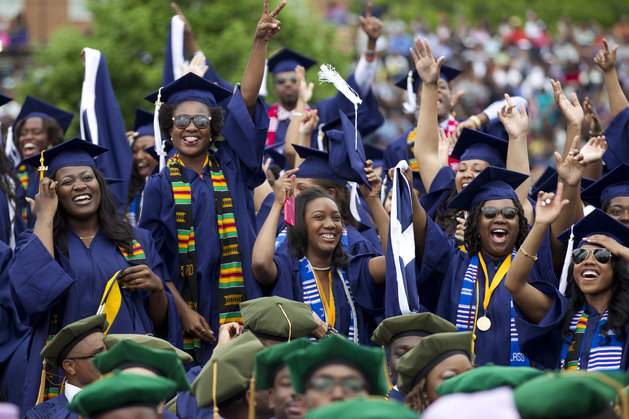There has been a recent increase in enrollment and applications at historically Black colleges and universities (HBCUs). According to a report from HBCU Connect on July 5, the growing trend of Black students pursuing higher education in Black spaces has been driven by several factors.
Schools such as Hampton University, Virginia State University, Virginia Union University, and Howard University have been at the forefront of this new trend.
One of the most significant factors contributing to the rise in applications to HBCUs has been their prominent reputation. They are recognized as “centers of academic excellence and supportive campus environments,” which makes them particularly attractive to students seeking higher education in a community-oriented and supportive atmosphere.
Another key factor has been the impact of the COVID-19 pandemic. HBCUs are known for prioritizing a high standard of education while also providing a safe environment in an institution that is well-equipped to maintain effective learning during uncertain times.
According to reports, this “has positioned HBCUs favorably among prospective students and families reevaluating their college choices.”
Additionally, HBCUs focus on providing scholarship opportunities and offering financial aid to students. By increasing their scholarship offerings, HBCUs have helped make higher education more attainable and accessible to students facing financial barriers.
The individual universities’ practices attract students and the broader recognition of their unique historical and educational contributions has played a role. Applicants are drawn to HBCUs’ well-established network of alumni and sponsors.
“With influential figures showcasing the success of HBCUs, it’s no surprise that students are drawn in.” VP of Student Affairs at Florida A&M University, Dr. William E. Hudson said.
According to White House reports, HBCU schools have “educated 40% of all Black engineers in the country, 50% of all Black lawyers, 70% of Black doctors, and an astonishing 80% of Black judges.”
These factors, and others, have helped increase students’ motivation to attend HBCUs.
For example, Howard received 37,000 applications in the past school year, a 12% increase for its incoming freshman class. FAMU has seen its incoming applications nearly double in the past two years. As of June, FAMU—considered the top public HBCU—received an influx of 21,939 applications for the incoming freshman class and concluded its application season with an admissions rate of 18%.
In essence, the surge represents a growing recognition of the value HBCUs offer in terms of education, culture, and community support. Such notable impacts will collectively contribute to the continued growth, reputation, and resilience of HBCUs as institutions of higher education.



